Understanding Modeling & Simulation
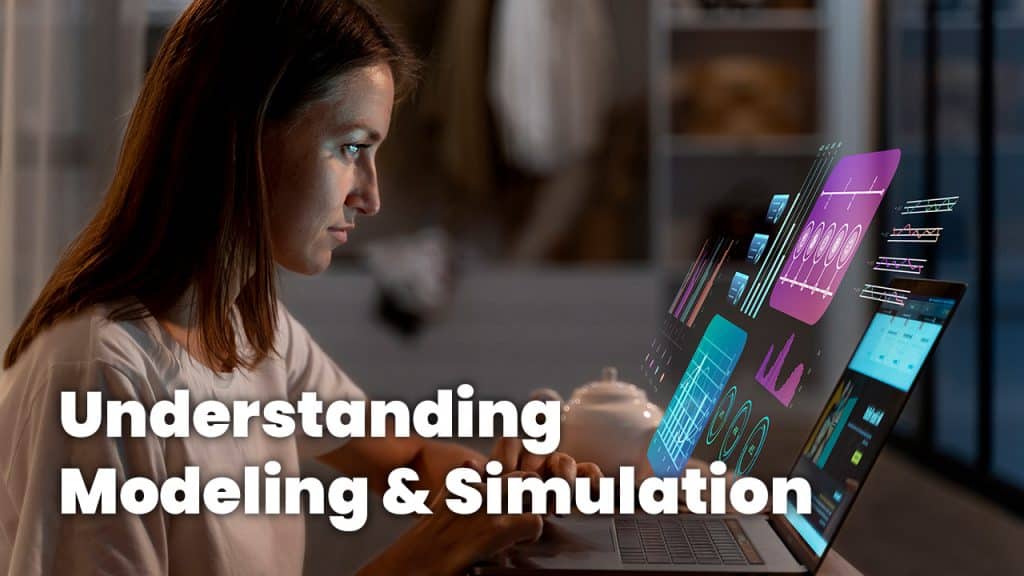
Every decision an organization makes involves some level of uncertainty. How will a new policy affect operations? What happens if supply chain disruptions occur? How can businesses optimize resources while preparing for unexpected scenarios?
These questions are complex, and relying on intuition alone can lead to costly mistakes.
Modeling & Simulation provides a structured approach to exploring different possibilities before taking action
What is Modeling & Simulation?
Modeling & Simulation refers to the use of mathematical models, computational techniques, and data-driven simulations to analyze real-world scenarios.
- Modeling is the process of creating a digital or mathematical representation of a system, process, or decision.
- Simulation involves running different scenarios within that model to predict outcomes, evaluate risks, and explore alternative strategies.
Instead of making decisions based only on past data and the assumption of continuity, Modeling & Simulation allows assessing a broader perspective which is more sensitive to changes and disruptions. Modeling & Simulation gives organizations tools to test different scenarios, anticipate risks, and make informed choices. These simulations can be conducted in various environments, such as:
Geospatial Simulations
Running scenario-based models on interactive maps to assess the impact of changes in infrastructure, logistics, or emergency response planning.
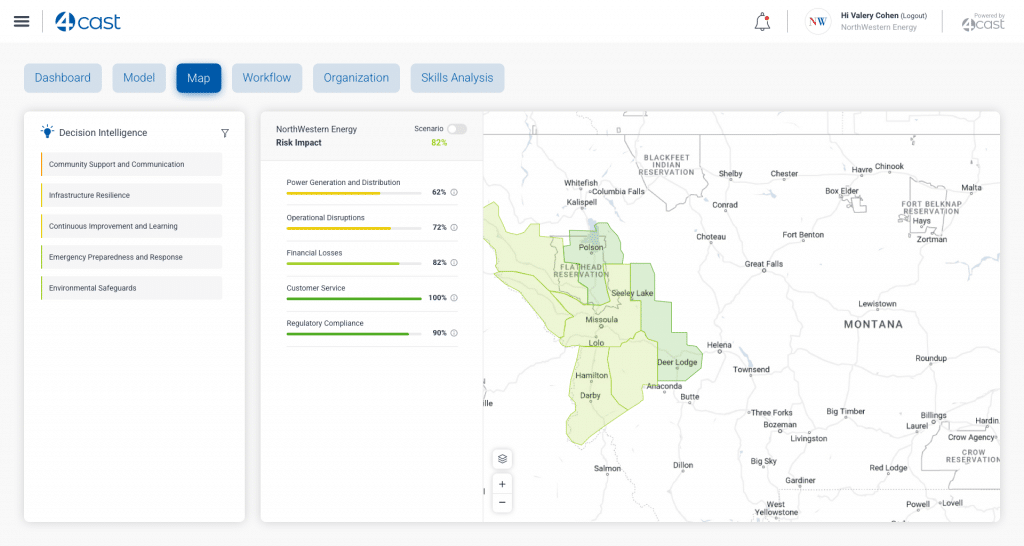
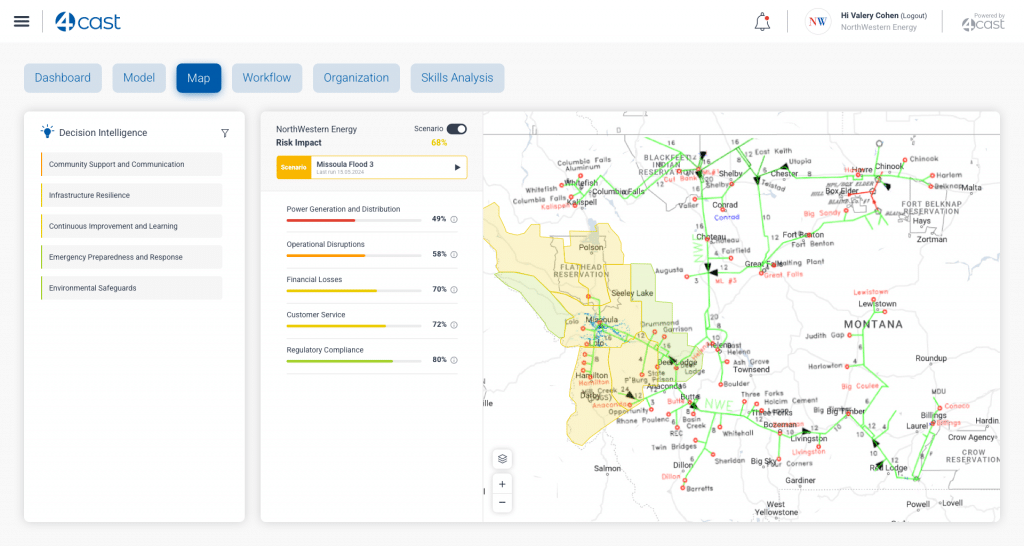
Performance Metric Simulations
Adjusting key performance indicators (KPIs) such as revenue, employee productivity, or resource allocation to see how different decisions affect organizational performance metrics.
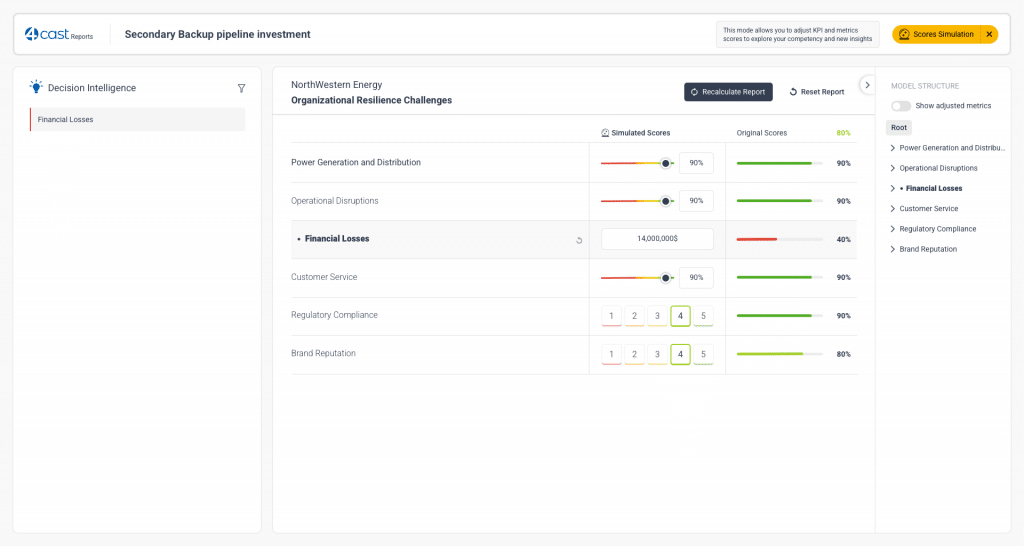
Interactions & Dependencies
Examining how a change in one part of a system (e.g., supply chain disruption) triggers cascading effects on other parts of the organization, helping decision-makers anticipate and mitigate risks before they escalate.
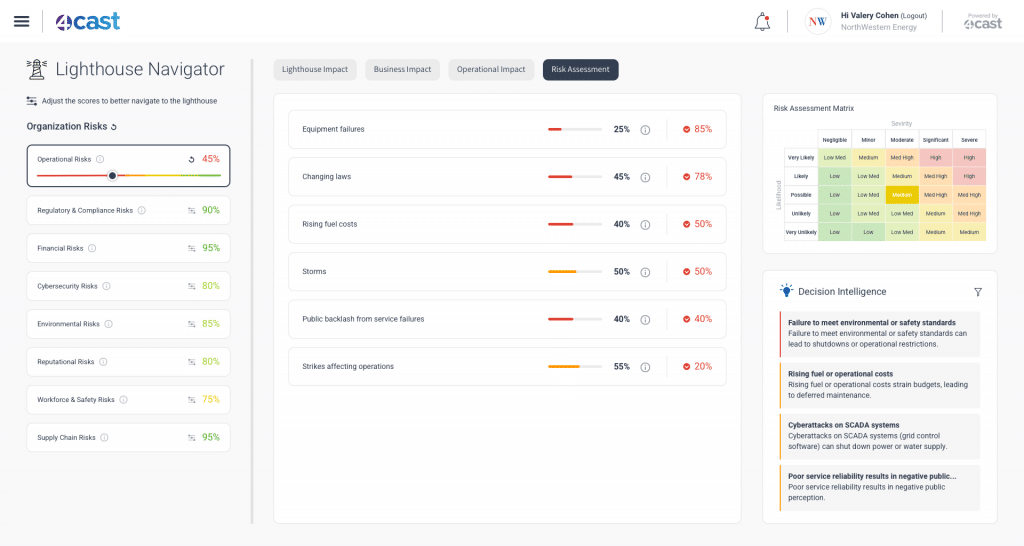
Why is Modeling & Simulation Important?
Traditional decision-making often relies on historical data and expert judgment. While valuable, these methods can struggle to predict dynamic, evolving situations. Modeling & Simulation provides several advantages:
Risk Reduction
Organizations can anticipate potential failures or disruptions before they happen
Cost Efficiency
Testing different scenarios in a virtual environment reduces the need for expensive real-world trials
Safety & Controlled Testing
Simulations allow organizations to experiment and train in risk-free environments
Better Resource Allocation
Simulations help organizations optimize the use of resources such as personnel, equipment, and funding by identifying the most efficient allocation strategies
Performance Optimization
Simulations help fine-tune processes, improving efficiency and effectiveness
Enhanced Training & Skill Development
In different Industries simulations are used to provide hands-on experience in a controlled and repeatable setting
Real-World Applications of Modeling & Simulation
Modeling & Simulation is widely used across industries to improve decision-making, enhance preparedness, and optimize performance. Modeling & Simulation can be applied in various fields, including:
- Military Training & Defense Planning: Simulations are used for mission readiness, resource allocation, and strategy testing under different combat scenarios.
- Disaster Response & Crisis Management: Emergency planners model different disaster scenarios—such as earthquakes, wildfires, and cyberattacks—to optimize response efforts and resource distribution.
- Manufacturing & Production Optimization: Factories use simulations to improve assembly line efficiency, reduce waste, and forecast supply chain disruptions.
- Financial & Risk Management: Banks and investment firms run economic simulations to stress-test financial portfolios and predict market fluctuations.
- Urban Planning & Infrastructure Development: Cities simulate traffic patterns, energy consumption, and infrastructure growth to enhance urban development strategies.
- Healthcare & Medical Research: Medical professionals simulate disease spread and treatment outcomes to improve public health policies and clinical decision-making.
How It’s Done at 4Cast
At 4Cast, Modeling & Simulation is at the core of our Decision Intelligence approach. 4Cast enables organizations to model complex decisions, test multiple scenarios, and analyze their impact on key operational and strategic objectives. Our platform offers multiple types of interactive simulations and visualizations, allowing decision-makers to explore different strategies, assess risks, and fine-tune their plans based on insights and recommendations.

